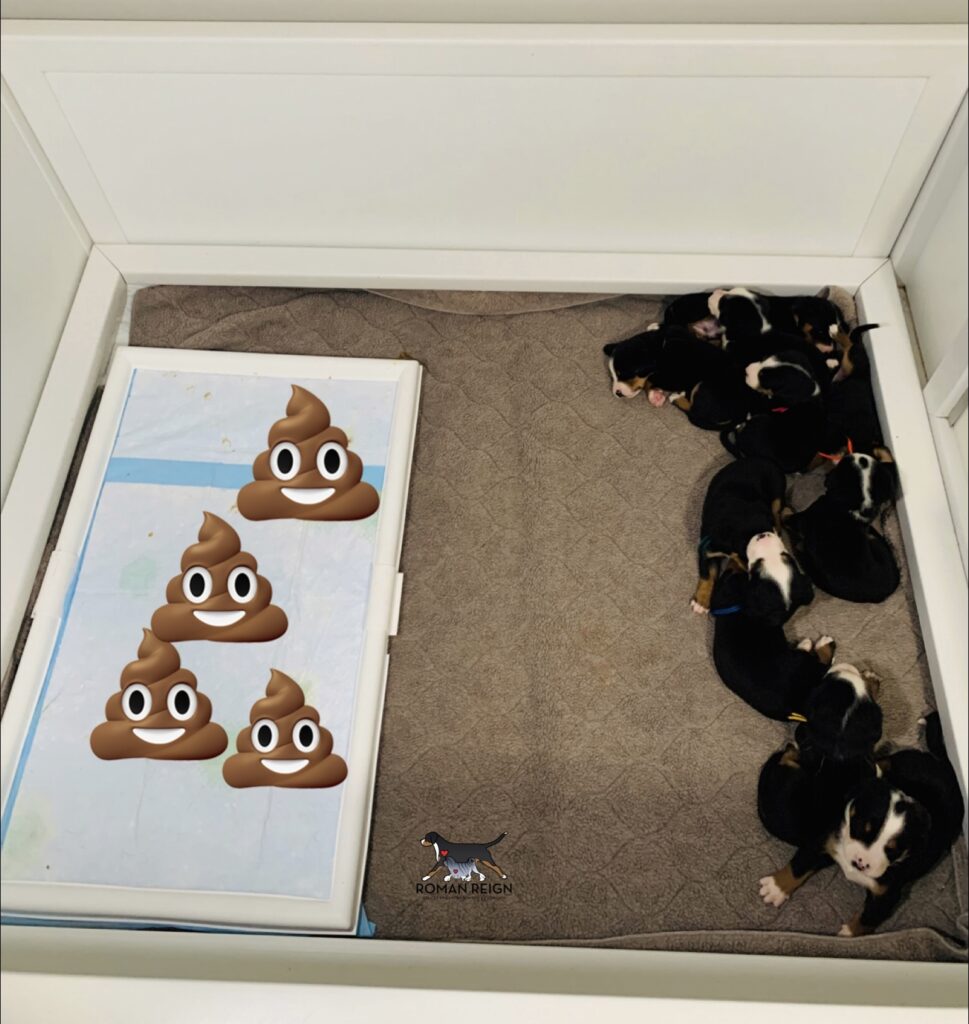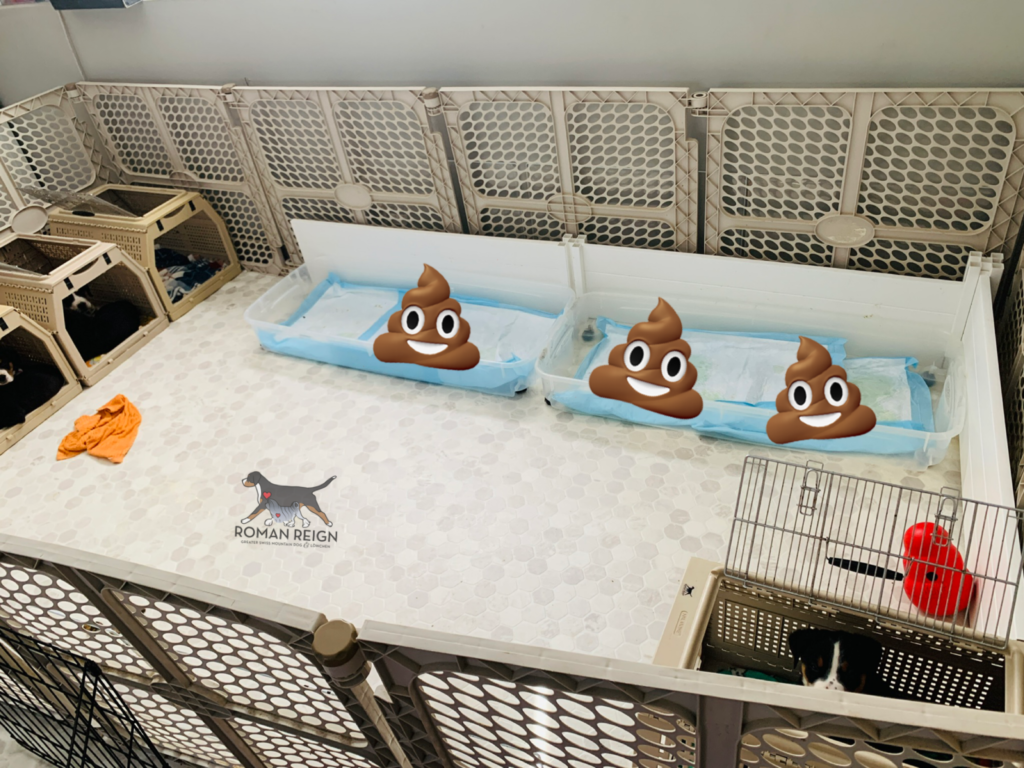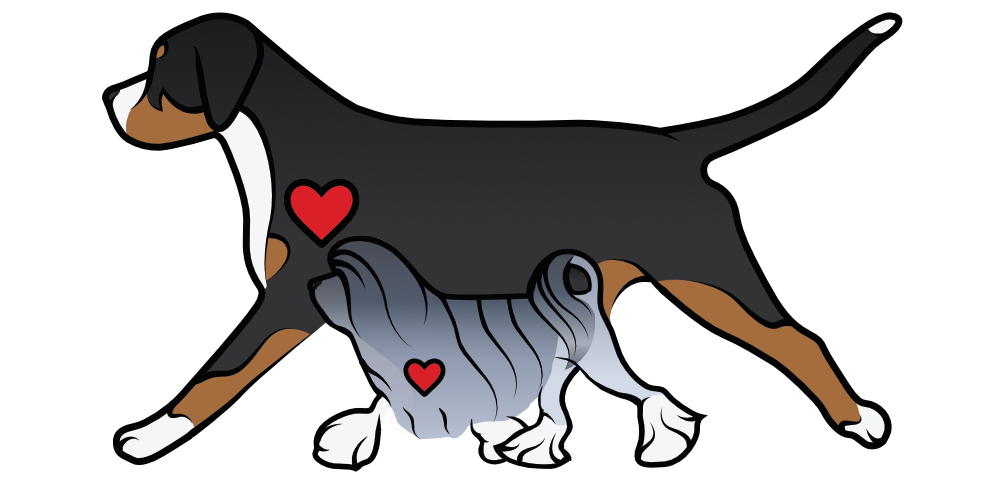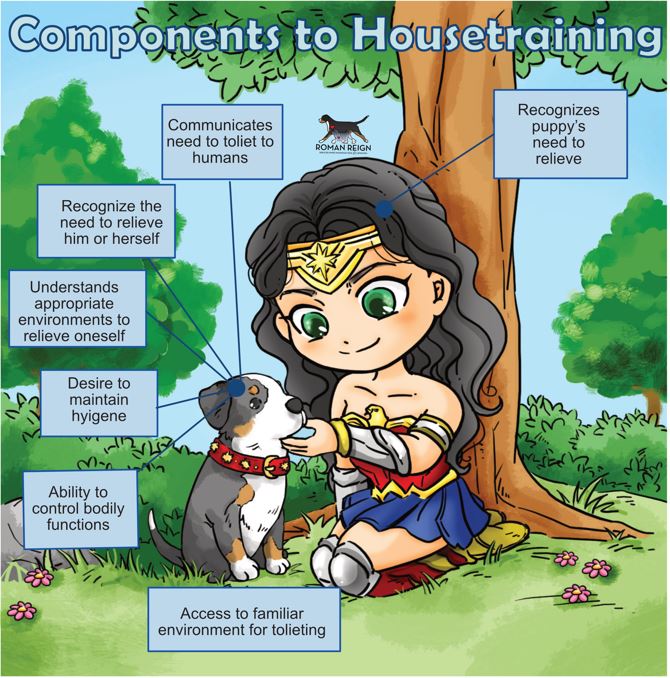House training a puppy can seem like a daunting task, and it can often times feel like a roller coaster. Here’s some principles to help better understand all the components that go into house training. For a step by step guide, we recommend the Susanne Shelton’s Poop School.
Expectations: Puppies are babies, and setting reasonable expectations will help keep everyone more satisfied with house training progress. It would be unreasonable to expect that a puppy of any breed can be left alone with a bucket of water for even a few hours without having an accident. However, it is quite reasonable to expect that an 8 week old puppy would be able to use paper or litter if left in a properly set up pen.
Excitement: Puppies, even up to a year old, will have the urge to relieve themselves after 10-15 minutes of activity. Even if you “just took the puppy out,” if there’s some physical activity, be prepared to take the puppy out again.
Developmental milestones: Puppy brains, bodies, and bodily functions do not always develop at the same speed. Two key components critical in a dog fully grasping where and when to go relieve themselves are: 1. Ability to recognize the urge and 2. Ability to hold it until they are in an acceptable location. You cannot rush these two processes. You must simply practice patience, and tell yourself that this phase shall soon pass. And it will. In a blink of an eye, your young puppy will be an adult. You’ll be wishing you could hang onto every last puff of puppy breath.
*Female Greater Swiss Mountain Dogs may go through phases of incontinence. This can be a very frustrating time, but it is not anything the puppy or owner is doing wrong. This is simply something that the females may go through as puppies, particularly around growth spurts. The biggest risk factor in incontinence continuing is spaying. The earlier a female is spayed, the higher the chances of incontinence.

Desire to stay clean: Dogs naturally have a tendency to want to keep their areas clean. If they were provided a specific place to relieve themselves and were raised in a clean environment, they typically maintain the desire to be clean. Dogs that did not have access to a clean environment or had a specific place to relieve themselves may have some challenges on this piece. The owner may need to re-instill the desire to keep clean.
Understanding where it is appropriate to potty: This is something a breeder typically takes on. There are a variety of ways to provide an appropriate place for puppies to relieve themselves: paper, litter, and artificial turf are all common materials. It is very easy to transition puppies from how they were raised to grass, gravel, or other appropriate outdoor surfaces.
The last two components are the responsibility of the owner: 1. Recognizing when a puppy needs to go and 2. Providing a place for the puppy to potty.
Puppies will absolutely tell you when they need to relieve themselves, and owners need to recognize the signs. Suddenly stopping what they are doing, looking around, darting around under furniture, and doing “the walk” are all signs owners need to get that puppy out ASAP. Don’t make the mistake of “waiting” it out. Puppy bladders and bowels don’t wait. When they have to go, they have to go.
If you feel like your dog doesn’t seem to be reliable in the house as fast as you would like, think about which components still need to be developed and make appropriate adjustments.


